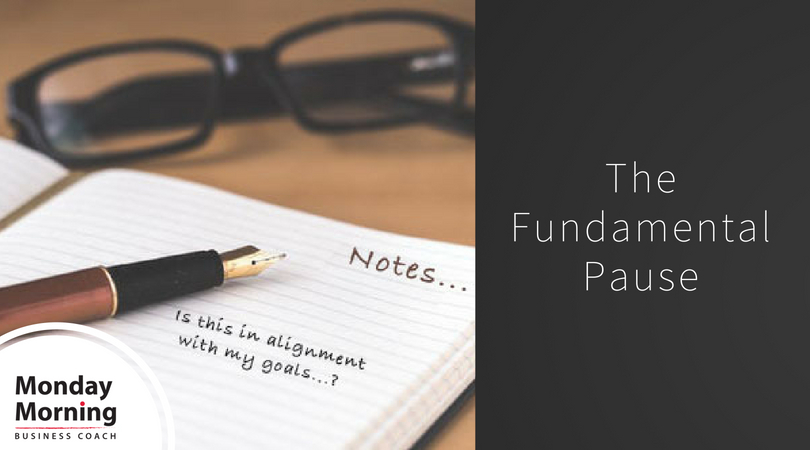As coaches, we get hired because people – despite the best of intentions – are struggling to change the things that are getting in the way of their success.
Our goal is to help you recognize and overcome those habitual reactions that keep the changes you’re working toward from taking hold.
The key behind the work that we do is helping people manage their reactivity, and to do that we teach them something we designed called, the Fundamental PAUSE.
The Fundamental PAUSE is a powerful yet simple step that can help you be a better leader, a better team member, and it can help improve communication with your partner or family. It can even help you relate more effectively to your kids.
If you’re going to effectively influence others, and if you’re going to be influenced by others (especially during stress-filled times), you have to interrupt old reacting patterns. This is what the Fundamental PAUSE is designed to do.
So, what do we mean by reacting? We mean those times when something happens, or someone says something, and you say or do something that only makes matters worse–whether that’s coming on too strong or saying nothing at all!
Reactions take away your power and decrease your credibility. Reactive people rarely get the respect or the attention of people they want. A reaction is like a grenade. If you introduce it into a room, most people are going to scatter!
So, in order to not react, and instead respond as a leader, you need to PAUSE.
PAUSING can make a tremendous difference in your success at work and at home.
So, how does the PAUSE work? While it sounds passive, it’s really an active moment that helps you regain control of your emotions and helps you align with the path towards your goal(s).
The PAUSE itself may be a breath, scribbling a note, grabbing a glass of water, or taking a bathroom break. It’s a moment between what’s incoming–that trigger that makes you see red–and what you do next.
In this moment as you PAUSE, you ask yourself:
Is what I am doing or about to do or say in alignment with my goals?
This PAUSE is your opportunity to stop reacting and to start responding in ways that move you forward toward your goals.
Day to day, start paying attention to your reactivity. What are the situations when you blow up or maybe get quiet and mentally leave a conversation?
The first step to PAUSING is understanding your triggers and recognizing how you react when things get hard so that you can interrupt that behavior and do instead what’s good for you.
We’ve got a helpful downloadable worksheet that you can use to plan ahead for those particularly annoying instances when you know you’re most likely to get reactive.
To help you complete the worksheet see our suggestions below:
- Write down a situation where you’ll likely get reactive or where you’ve gotten reactive in the past.
- Write the things that are most likely to trigger a reaction in you. It may be a tone of voice, people talking over one another, someone undermining the value of something you did, etc.
- Note how you typically react in that section. Do you get silent and lean back? Do you get snarky, defensive, or angry and dismissive? This is particular to you. There is no right answer. It might be helpful to think about the feedback you have gotten from others. What’s your hot button?
- Imagine that you’re able to PAUSE in that moment and ask yourself, “Is what I am about to say or do in alignment with my goals?” Now, write down how you would respond if aligned with your goals.
- Explore what you believe would be your new results if you responded to the situation as a leader rather than old reacting patterns.
It certainly won’t go exactly as you picture it, but this is a very powerful and productive tool that will help you begin to defuse your triggers–even if just a little at first. The beauty of the PAUSE is that you can practice it anytime you want.
Filling out this worksheet before tough situations arise can help you prepare so that you’re not caught off guard. Or, filling it out afterward allows practice in understanding what triggers you and how you might do something different next time!
Try it out and let us know how it goes.
~Linda, Stephanie, and Heather

